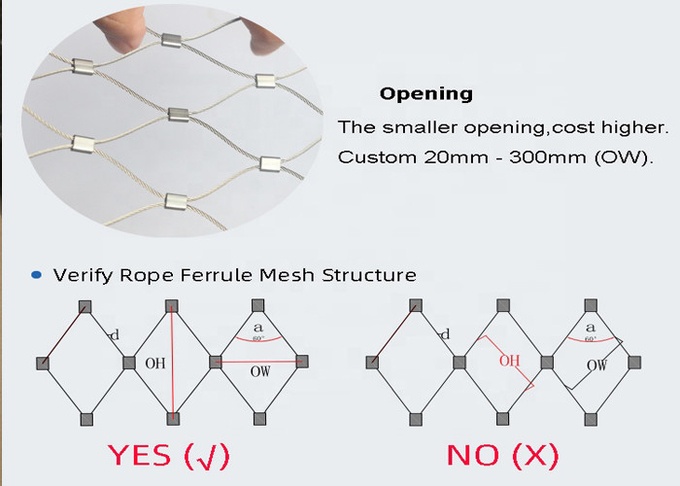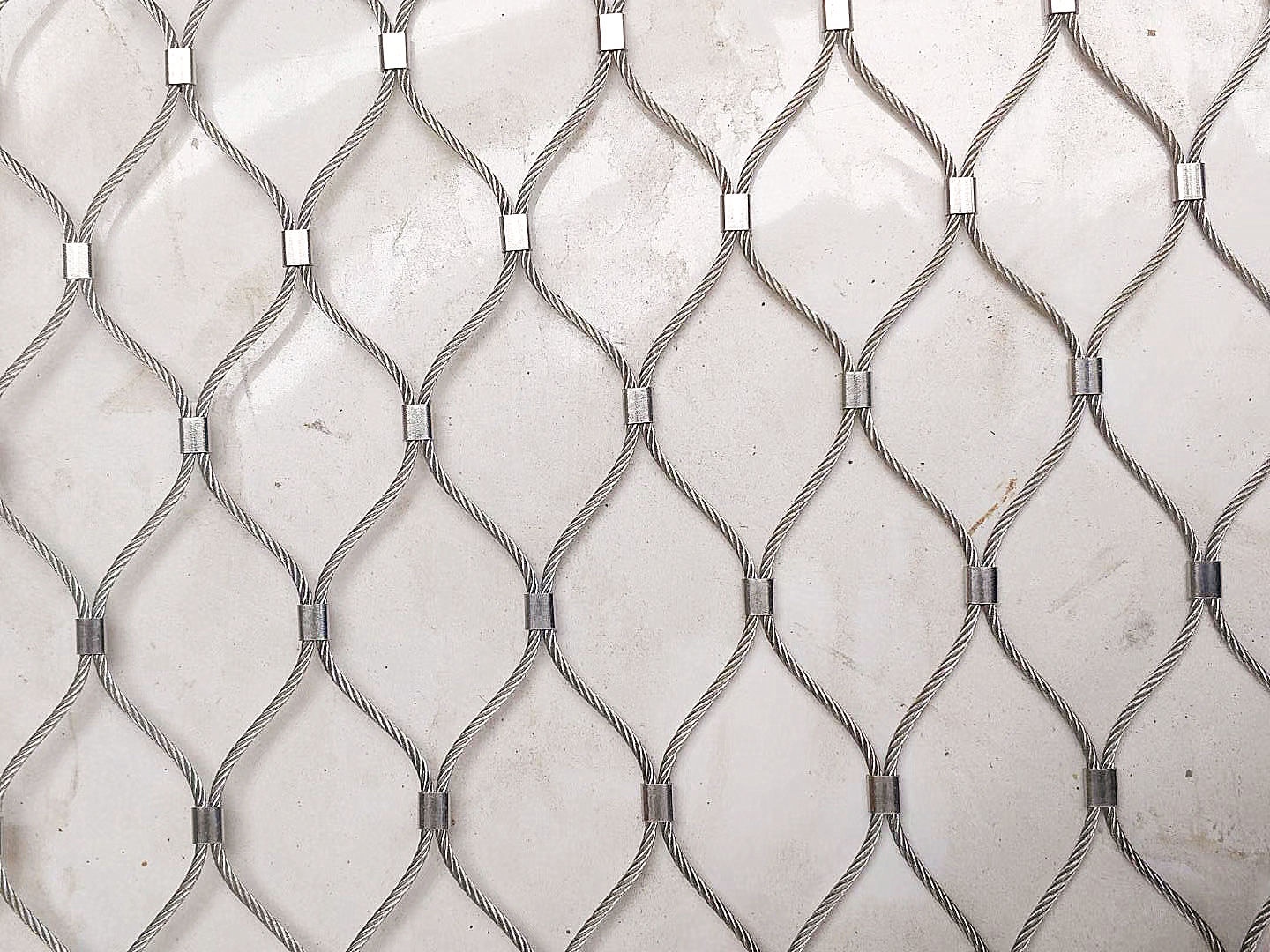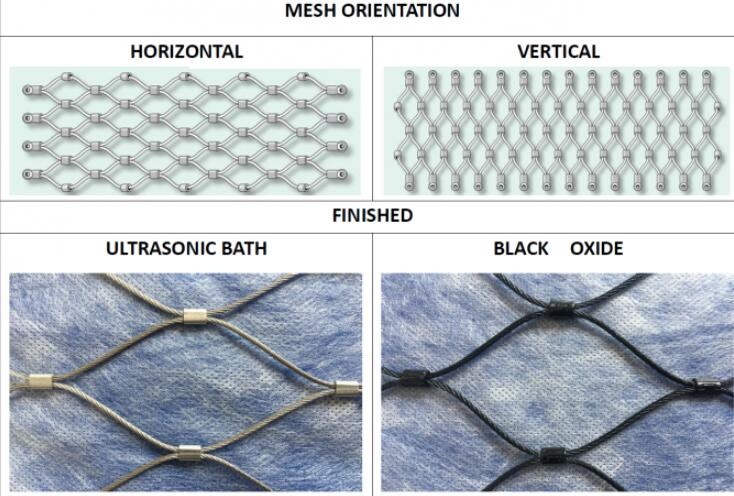316 stainless steel is a strong, rust-resistant metal used in many areas. It's made of elements like chromium, nickel, molybdenum, and more. This blend makes it especially good at resisting tiny holes, cracks, and salty conditions. In this piece, we'll take a closer look at what makes this metal special, where it's used, and why it's so helpful.

316 stainless steel is super useful. One of the big places you'll find it is in zoos. They use it to make the mesh for animal enclosures. This zoo mesh is strong and doesn't rust, so it keeps the animals safe and lasts a long time.
Another place you'll see stainless steel is in making rope nets. These ropes are super tough and resist rust. They're perfect for uses where you need strength and durability, like in construction or in heavy-duty cargo nets.
This just shows how versatile 316 stainless steel is. Whether it's keeping lions safe in a zoo or helping to lift heavy objects, 316L stainless steel gets the job done.

| Property | Value |
|---|---|
| Chemical Composition | Fe, <0.03% C, 16-18.5% Cr, 10-14% Ni, |
| 2-3% Mo, <2% Mn, <1% Si, <0.045% P, <0.03% S | |
| Tensile Strength | Minimum 515 MPa |
| Yield Strength (0.2% Proof) | Minimum 205 MPa |
| Elongation | Minimum 40% in 50 mm |
| Hardness (Rockwell B) | Maximum 95 HR B |
| Density | 8000 kg/m3 |
| Elastic Modulus | 193 GPa |
| Coeff. of Thermal Expansion | 15.9 μm/m/°C (0-100 °C) |
| 16.2 μm/m/°C (0-315 °C) | |
| 17.5 μm/m/°C (0-538 °C) | |
| Thermal Conductivity | 16.3 W/m·K (at 100 °C) |
| 21.5 W/m·K (at 500 °C) | |
| Specific Heat (0-100 °C) | 500 J/kg·K |
| Electrical Resistivity | 740 nΩ·m (at 20 °C) |
Note: The values provided are approximate and may vary depending on specific product forms and manufacturing processes.
Grade 316 stainless steel is made of special elements that protect it from rust. It has between 16% and 18.5% chromium that helps form a protective layer on its surface, making it hard for rust to form. Also, it has 2-3% molybdenum that makes it tough against tiny cracks and holes, particularly when in places with lots of salt (chlorides). This type of steel is better than Grade 304 stainless steel when it comes to fighting off rust. This makes it great for heavy-duty jobs.
Grade 316 stainless steel is strong and long-lasting. It can withstand a lot of pulling force, up to 515 MPa, and it can handle a stress level up to 205 MPa before it starts to permanently deform. This steel is very strong and keeps its strength even in very cold temperatures. This makes it suitable for many different places and conditions.
Grade 316 stainless steel is useful in many areas. In the food-making industry, it's used a lot for tools and surfaces because it can handle salt and is easy to clean. It's also used on lab tables, buildings near the sea, boat parts, and devices that control heat. The steel's ability to handle salt at high temperatures makes it perfect for containers that carry chemicals and parts in vehicles.
You can weld Grade 316 stainless steel easily. You can do this with or without extra metals. For welding, you use Grade 316 or 316L rods. If you weld large parts, you need to heat them again after welding. This step keeps the metal strong against rust. You can also shape this steel easily. New types, called "Ugima," let you shape it faster and with less damage to your tools. This improvement makes work more efficient.
You can find some Grade 316 stainless steel products with two labels. These meet both the 316 and 316L standards. You often see these labels on plates and pipes. But, these double-labeled products don't fit the Grade 316H requirements. You need Grade 316H for structures and things that get very hot. Depending on what you need, you could think about other types. These include 316Ti for better heat resistance, 316N for more strength, and 317L or 904L for better resistance to salt.

Many industries pick Grade 316 stainless steel because it resists rust, is strong, and you can use it in many ways. You see it in tools for making food, buildings near the sea, containers for chemicals, and devices that manage heat. Understanding what this metal is made of, how strong it is, and where you can use it helps builders and designers make the best use of it. In the end, this leads to products that last a long time and satisfy customers.
Explore our range of high-quality, durable zoo m
Discover the exceptional corrosion resistance, v
Discover the benefits and applications of stainl
Contact: Frank
Phone: +86-17153077217
Tel: 0086-318-7883576
Email: sales@ropemesh.com.au
Add: 053600 Ziwu Indutries Zone Zi Wen Town Anping County Hengshui Heibei Province China